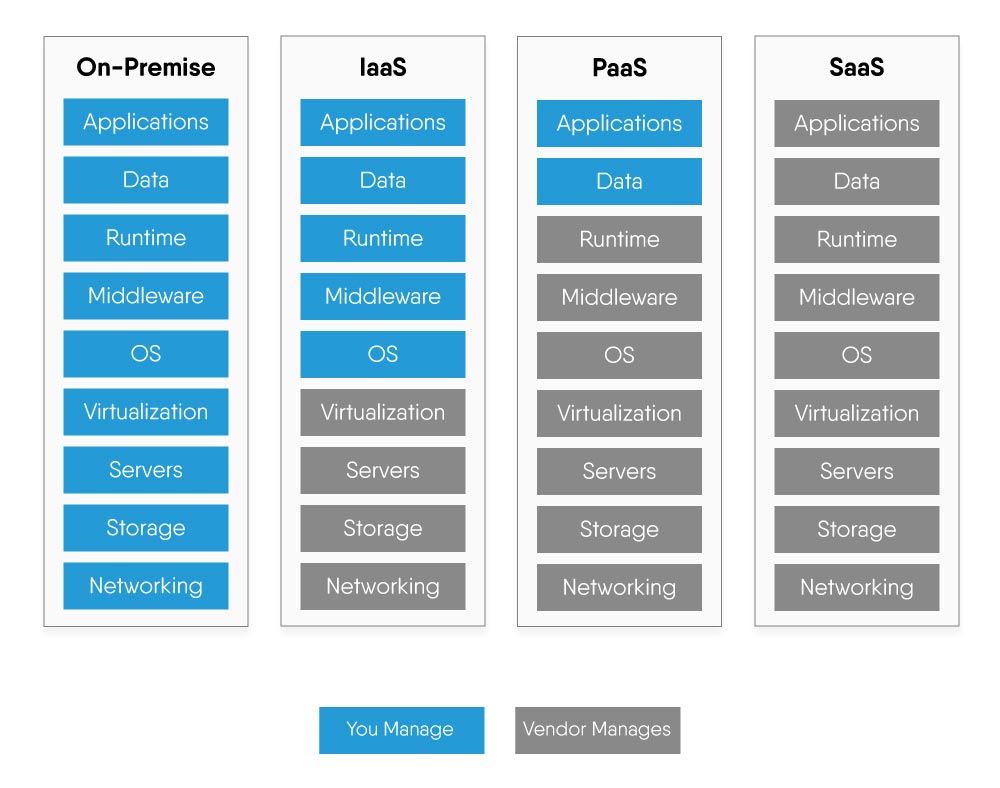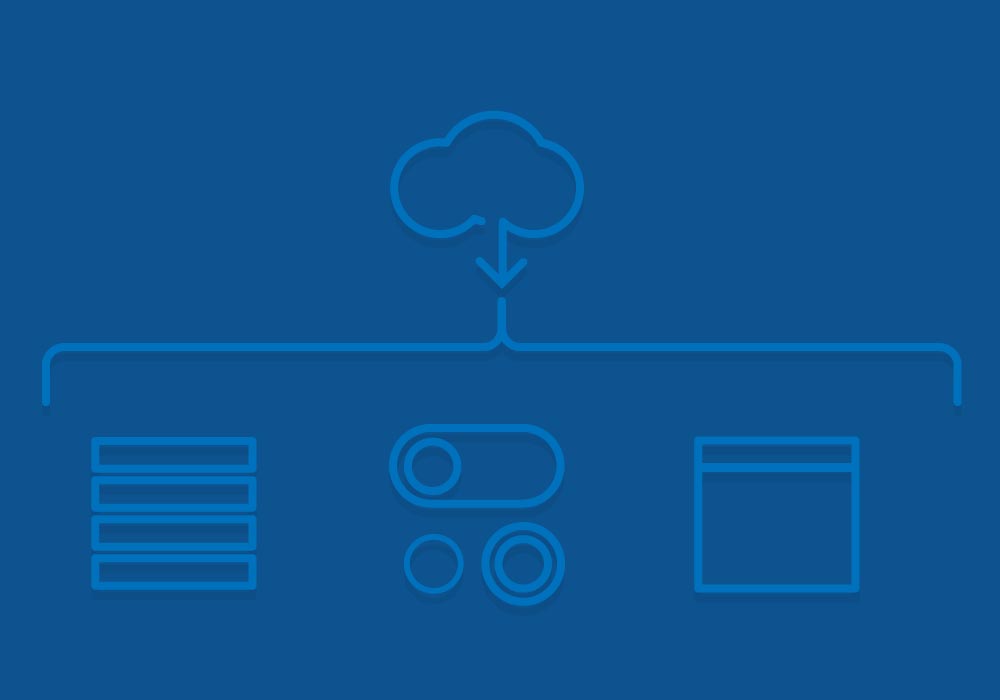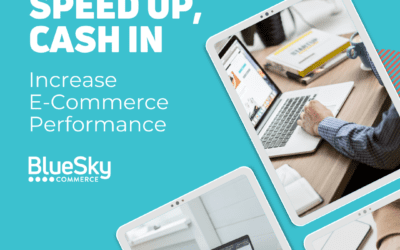We talk to businesses every day who are considering a transition from an on-premise eCommerce application to a Cloud-based model.
Many of these businesses are looking to take advantage of the scalability and flexibility a Cloud-based eCommerce solution provides while avoiding time-consuming IT processes. When considering your Cloud options, it’s important to understand the different service models and their benefits.
“As a Service” Cloud Models
You might have heard of SaaS (Software as a Service) or IaaS (Infrastructure as a Service) or even PaaS (Platform as a Service) but weren’t sure what they stood for. All three of these Cloud models streamline the configuration, deployment, and management of infrastructure and applications, but in different ways.
The chart below illustrates the various Cloud models and what aspects you manage compared to a traditional on-premise model.

Breaking Down the Differences
In simple terms, the first letter of each model stands for whatever is available quickly and accessible from multiple devices through a Cloud network. It’s important to note that you aren’t confined to using just one model, many businesses use a combination of SaaS and IaaS Cloud computing service models.
Conclusion: SaaS vs PaaS vs IaaS
Each Cloud model offers many benefits that on-premise models simply cannot. However, each model comes with different features, functionalities and limitations that may or may not fit with your organizational needs. No matter which option or combination of options you choose, migrating your eCommerce business application to The Cloud is worth your serious consideration.




